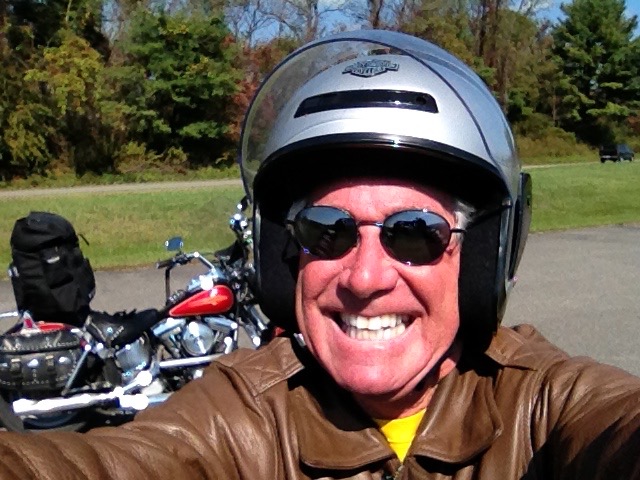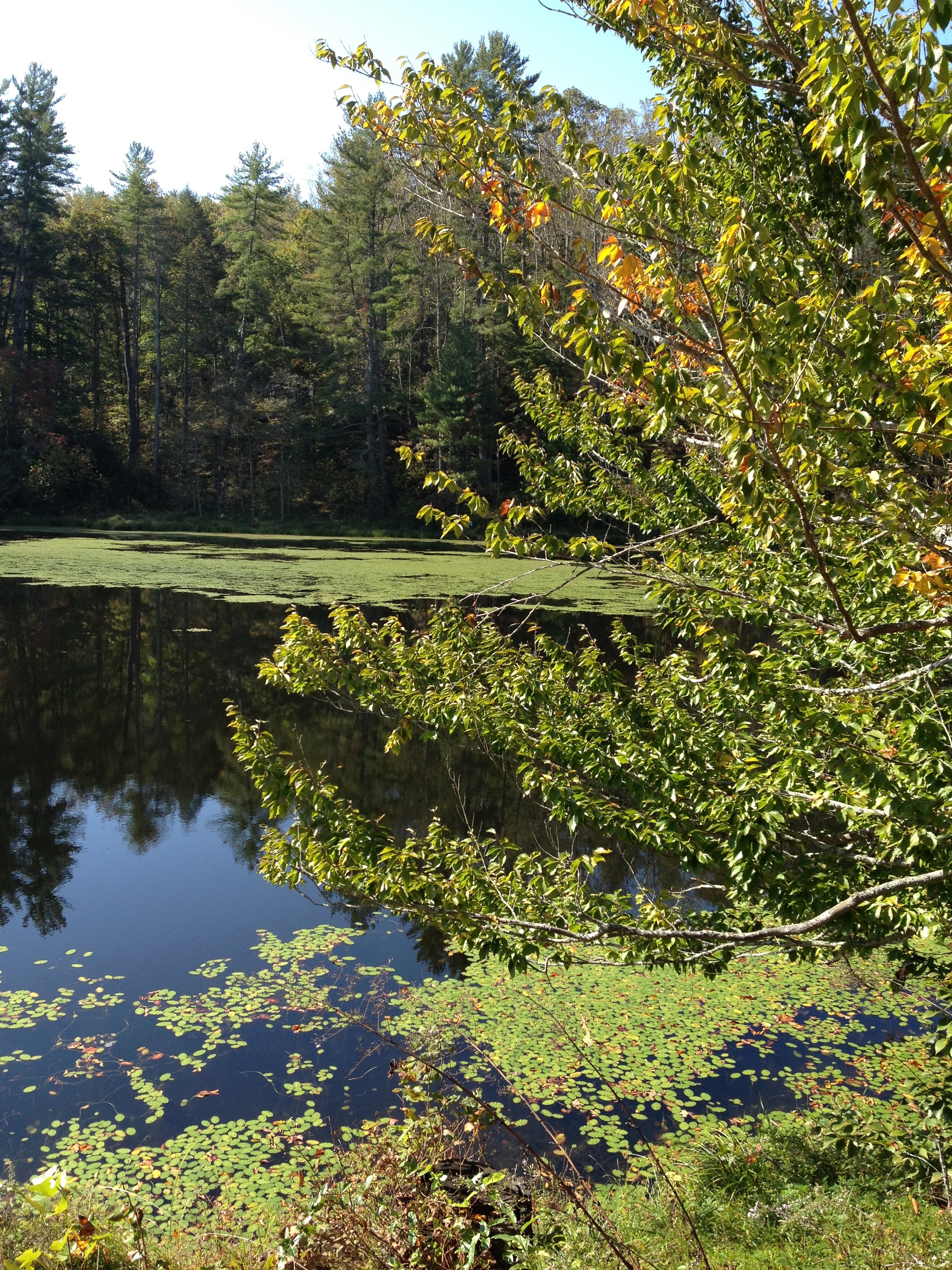Sunshine!
For the first time in more than a week, we wake up to brilliant, sunny skies. Woo-hoo!
It’s a long overdue change in the weather. The forecast even looks good for the remainder of our ride to Farragut, Tennessee. So if you see me smiling today, there’s good reason.
Let’s put on our sunglasses and hit the road.

***
Our day begins in Waynesboro, Virginia. As we learned yesterday, Waynesboro was named for US Army general and statesman Anthony Wayne. Wayne’s military exploits and fiery personality quickly earned him the nickname of Mad Anthony.
The Civil War’s Battle of Waynesboro, which lasted only 20 minutes, was fought on March 2, 1865. It was the final battle for Confederate Lt. Gen. Jubal Early, whose force was destroyed there. Losing that battle was the fatal blow for the Confederate Army in the Shenandoah Valley.
***
We spend almost the entire day on the Blue Ridge Parkway. Click here to see a map of the Blue Ridge Parkway. It may be the best place on the planet to ride a motorcycle.

The Parkway has good road surfaces, great scenery, excellent visibility, gentle curves, a 45 mph speed limit, and no commercial distractions.
Last year, Ray and I rode the Blue Ridge Parkway from south to north, all 469 miles of it. This year, we’ll ride most of it, on our way home to Tennessee, from north to south. It seems like a different road, and is only vaguely familiar from a year ago. Everything that was on the left is now on the right. There’s probably a political metaphor somewhere in that.
The Blue Ridge Parkway runs mostly along the Blue Ridge Mountains, a major mountain chain that’s part of the Appalachian Mountains. The Parkway includes the Great Smoky Mountains, the Balsams, the Pisgahs, the Craggies, and the Black Mountains. This place seems to have been constructed for motorcycles. The Blue Ridge Parkway was actually built to connect Shenandoah National Park (our ride yesterday) to the Great Smoky Mountains National Park.
It began as a Civilian Conservation Corps project in the 1930s, and took more than 52 years to complete. Originally called the Appalachian Scenic Highway, construction began on September 11, 1935. During World War II, Civilian Conservation Corps crews were replaced by conscientious objectors in the Civilian Public Service program.

The Civilian Conservation Corps ran from 1933 to 1942 as part of FDR’s New Deal. It provided unskilled manual labor jobs related to the conservation and development of natural resources in rural lands owned by federal, state and local governments. The CCC was designed to provide employment for young men who had difficulty finding jobs during the Great Depression. Over the program’s life, some 2.5 million young men participated. Among the Civilian Conservation Corps’ most famous alumni: actors Raymond Burr, Robert Mitchum and Walter Matthau; test pilot Chuck Yeager; and baseball players Stan Musial and Red Schoendienst. One of the most spectacular and enduring legacies of the CCC’s efforts is the Blue Ridge Parkway.
***
The Civilian Conservation Corps did not construct the entire Blue Ridge Parkway. The final stretch of the Parkway was completed around Grandfather Mountain, North Carolina, in 1983. The Parkway is entirely in two states: Virginia (our ride today) and North Carolina (our ride tomorrow). Its highest point is 6,053 feet on Richland Balsam Mountain. The speed limit is never above 45 MPH, which is a good way to guarantee a leisurely and safe ride.
We jump on the Parkway today at Milepost 0, and begin the journey that ends in Cherokee, North Carolina, at Milepost 469. Click here to learn more about the Blue Ridge Parkway, truly one of the best motorcycle rides anywhere.
There are more than 200 overlooks along the Parkway. Some have spectacular scenic vistas; others just are small parking lots looking head-on at trees. The views may have been good when the Parkway was built, but the trees have grown up over the past 70-or-so years, all but destroying some views. But if you’re selective, you can easily find overlooks worth seeing. I’ve tried to find a few, and include them below in today’s photos.

About halfway through the day’s ride, we pass by Roanoke, Virginia, the largest city along the Parkway. A sports fun fact about Roanoke: the 1971–1972 Virginia Squires of the ABA are the only major league sports team to regularly play home games in Roanoke. During the 1971–1972 season, the Squires split home games among Richmond, Norfolk, Hampton Roads, and Roanoke. Julius Erving (who is two days older than I am) played his professional rookie season with the Squires in 1971–1972.
We hop off the Parkway for a few minutes in Roanoke for gas and lunch. Neither is worth mentioning; gas is gas, and our roadside diner experience would rate a poor review on Yelp and Trip Advisor.
***
We pass by Mabry Mill at Milepost 170, where there’s a gristmill, sawmill and blacksmith shop. And a restaurant, which probably would have been a better choice than the disappointing diner in Roanoke. Click here to see what we missed.

We ride through Rocky Knob Recreational Area, one of the first developed areas built along the Parkway. You may remember that last year, Ray and I stayed at the Rocky Knob Cabins, near Meadows of Dan, Virginia. The cabins were built around 1935 by the Civilian Conservation Corps to house themselves while they built the nearby section of the Blue Ridge Parkway. Click here if you’re feeling the urge to rent a room. Check in time is 3 pm.
Not far from Rocky Knob, we arrive at Meadows of Dan, Virginia. Meadows of Dan is where the Blue Ridge Parkway crosses US-58, the Jeb Stuart Highway. The community’s name comes from the Dan River, which flows through the area. The Meadows of Dan motto: “A simpler place in time.”
Simplicity is what we yearn for on this trip. So it hardly seems right that our next stop is called “Fancy Gap.” Here in Fancy Gap, there are no flights of fancy, no passing fancies. There’s nothing fancy, except the name.
Yes, Fancy Gap, Virginia, may have a gap, but it’s not ornate, showy, elaborate, or chichi.
If you Google “things to do in Fancy Gap,” you will find some interesting activities and locations, including the Fancy Gap Pickin’ Porch. At the Pickin’ Porch, you will enjoy musical events, usually involving a banjo. These are the Blue Ridge Mountains, after all. Pickin’ and Grinnin’ is what people do at bluegrass jam sessions. You pick the strings of the instrument and grin because it makes you happy. If you’re into pickin’ and grinnin’, click here for a slice of Roy Clark. Miles ridden today: 222.

Tonight, we’re at the Days Inn in Fancy Gap ($75 tax).
***
Day Fifteen Summary: Back on the Blue Ridge Parkway, Honoring the Civilian Conservation Corps, Saluting Doctor J, a simpler place in time, pickin’ and grinnin’.
For today’s complete route from Waynesboro, Virginia, to Fancy Gap, Virginia, click here.
What will tomorrow bring?